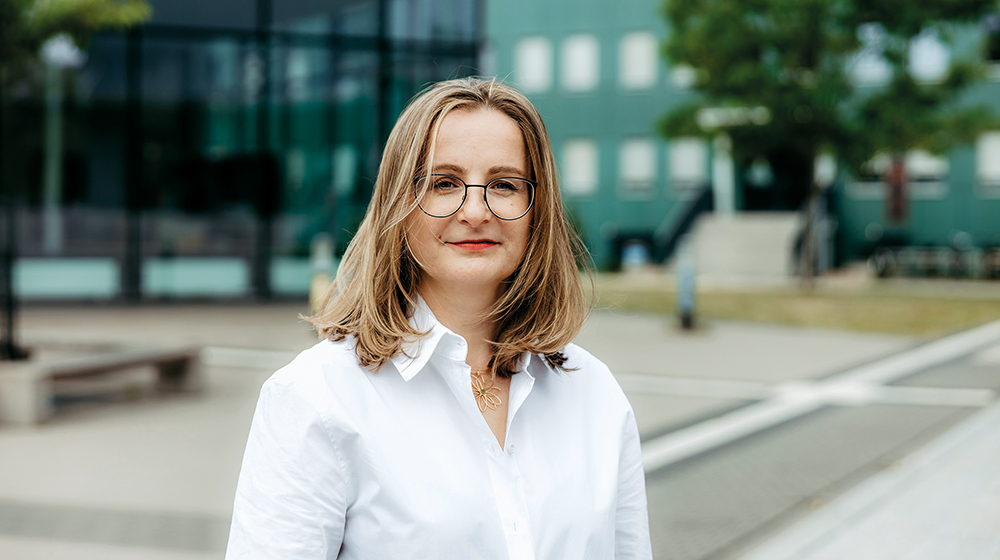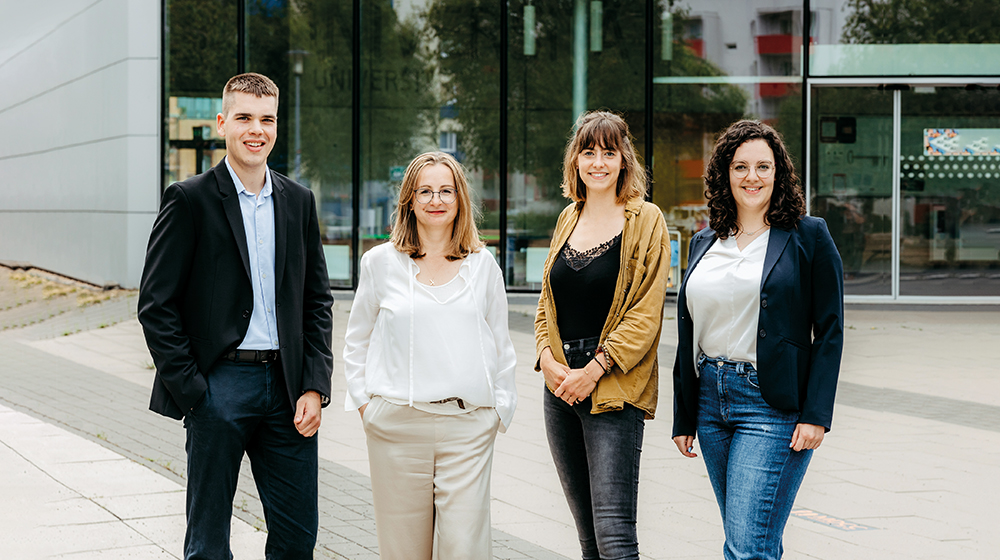
Have you ever heard of the “Stuttgart Model”? Not many people are familiar with this term, but it represents a milestone in the education and training of future generations. In the 1970s educators in Baden-Württemberg had the idea of combining an academic education with practical training in a single course based on the traditional dual system of vocational education. The pilot project for what became known as “dual study programs” was so well received by high school graduates that the pilot project phase was soon declared a success and the colleges of advanced vocational studies (Berufsakademien) that were founded in this context became firmly established in the education system. If we look at statistics published by the Federal Institute for Vocational Education and Training, it is quickly apparent that the demand for dual study programs has continued to increase ever since, according to Professor Dr. Dina Kuhlee of the Chair of Business Education at Otto von Guericke University Magdeburg. Hybrid programs of this kind that combine academic and vocational education are also becoming increasingly popular internationally. “Nevertheless, we have very little empirically-backed knowledge about dual study programs and their students,” explains the educational researcher. “That is why we are comparing hybrid study programs in Germany, England and Austria in our international research project, “Int-Hybrid”. With funding from the Federal Ministry of Education and Research, we are primarily examining the objectives and expectations of education policy and the providers of these courses, the institutional framework conditions for the programs and study success.”
Academic meets vocational training
In Germany, there is actually a clear separation between the academic and the vocational education sectors that has developed historically. “In principle, they are parallel worlds. This has also been influenced by the traditional view in Germany that we need academic knowledge for some areas of activity and application-oriented, practical knowledge for others, which tends to be more closely associated with vocational training,” says Professor Kuhlee. However, the business education specialist goes on to explain that “It is clear that separating academic and practical knowledge does not work and the fact that new, increasingly more advanced qualifications are being demanded of skilled professionals by industry raises the question of the extent to which academic and vocational education need to converge.” And they are already doing so, with a growing porosity between the two education sectors. “For example, higher education entrance qualifications are increasingly being obtained in the vocational sector, and not just in the traditional way in grammar schools. Furthermore, nowadays it is also possible to gain admission to university without a higher education entrance qualification. Universities are diversifying their study programs and becoming more application oriented. Vocational training programs are becoming more demanding in terms of content.” In particular, the dual study programs are a clear example of the two sectors converging upon one another because they dovetail programs from both the vocational and academic education sectors.
 Prof. Dina Kuhlee (Photo: Jana Dünnhaupt / Uni Magdeburg)
Prof. Dina Kuhlee (Photo: Jana Dünnhaupt / Uni Magdeburg)
In Kuhlee's view, one particularly interesting thing about dual study programs is that they transfer the concept of dual vocational training into the academic world. “Basically, the idea of the duality of traditional apprenticeships has been adopted. Not only is practical, operational training in companies interlinked with theoretical, academic education in universities, but, like apprentices in the traditional dual system, the students also have a training contract with the company under private law and are simultaneously enrolled at university. Depending on the structure of the study program, this means that students work towards a Bachelor’s degree and where applicable complete a traditional dual apprenticeship at the same time. In the latter case, students also attend vocational school as a third learning venue. The applicants for study places are primarily selected by the companies. And the numbers of applicants and students are growing!” However, there are very few statistics or research findings about the study programs: “There is not even one official statistic that definitively tells us how many dual study programs there are in Germany,” says Professor Kuhlee.
And that is where the three-year Int-Hybrid project comes in. The study focuses on the study success of the dual program students. “We do not define study success in the traditional way with indicators such as grades or whether the standard study duration was adhered to. Instead we are more interested in subjective success criteria, for example, perceived competency growth, satisfaction with the program and whether the students’ expectations of the dual study program were met,” explains the business education specialist. Furthermore, of particular interest is the role that the students see themselves in: do they feel that they belong more to the company or the university? “The small amount of literature that already exists speaks of the so-called on-the-job academic type of education. This means that these students are active in both the practical-vocational and academic fields and are thus simultaneously developing an occupation and an academic identity. This is a central question behind our project. Do the students really develop this kind of academic-professional self-concept, and what does it look like?”
 Among other things, Prof. Kuhlee's team is investigating how satisfied students are with the study program and whether their expectations of the dual study program are being met. (Photo: Jana Dünnhaupt / Uni Magdeburg)
Among other things, Prof. Kuhlee's team is investigating how satisfied students are with the study program and whether their expectations of the dual study program are being met. (Photo: Jana Dünnhaupt / Uni Magdeburg)
Binding standards are missing
In the process, the question about networking is a critical point: how, actually, are the two learning venues, i.e. the company and the university, connected? There are no predefined structures or training regulations covering the different locations, like those set in vocational education by education policy stakeholders, and so there are no binding structures for universities and companies either in terms of the design of the dual study programs. “It is implicitly assumed that the students will somehow manage by themselves to network and transfer between their university and practical, on-the-job content. We are interested to know whether they are really successful in doing this,” explains Professor Kuhlee. Furthermore, the study is also exploring how companies and universities work together to facilitate dual study programs. As previously mentioned, with a traditional vocational apprenticeship, for each officially recognized trade there are standard training regulations and associated framework curricula; these regulations are negotiated by unions, employer associations, the states and the federal government. Dual study programs do not have anything like this, which consequently makes achieving direct comparisons and consistent quality very difficult.
Nevertheless, different stakeholders are important to the success of dual study programs. For this reason, the Int-Hybrid project is examining three different levels:
- the micro level is dedicated to the issue of subjective study success on the part of the dual program students.
- The meso level focuses on the institutions that design and offer the dual study programs, i.e. the companies and universities: what do they associate with dual study programs and how do they organize them?
- On the macro level, the educational policy intentions that were associated with the introduction of dual study programs are examined more closely: why is educational policy currently focusing on dual study programs and what is the desired outcome of promoting these programs?
The researchers have selected these three focal areas to enable them to investigate whether educational policy, the companies and universities, and students have different perspectives on dual study programs. Do their expectations differ? How do the three groups define study success? In the end, the team led by Professor Kuhlee hopes to be able to say how dual study programs should be organized, in order for them to lead to the outcomes desired by the different stakeholders involved.
To this end, the business education specialists are conducting expert interviews with those responsible for educational policy as well as representatives from the companies and universities offering the programs. The students are being surveyed by questionnaire and an online diary study. “Of primary importance to us is the question of academic-professional self-image, the perception of transfer and networking and also the perceptions of study success. And then we have also set up an online diary study, so that we can look at learning and student behavior in greater depth,” explains Professor Kuhlee. The researchers follow the students over the course of a semester with the help of this online diary study in order to obtain accurate information about their learning activities and the way they invest their time. What do the students actually spend their time on and to what purpose? How do they approach their tasks in the company and university in terms of learning behavior and what are the outcomes? How do they perceive their success in these study programs? Are there preferences in one direction or another of this dual design of program, or do the students rate both settings, i.e. company and university, equally?
 The team off Prof. Kuhlee: Edgar Hahn, Prof. Dr. Dina Kuhlee, Johanna Telle Zips, Lisa-Marie Brand (Photo: Jana Dünnhaupt / Uni Magdeburg)
The team off Prof. Kuhlee: Edgar Hahn, Prof. Dr. Dina Kuhlee, Johanna Telle Zips, Lisa-Marie Brand (Photo: Jana Dünnhaupt / Uni Magdeburg)
The aim of the study is not only to obtain information for the German context, but also beyond the country's borders and thus explore the international differences and commonalities between Germany, England and Austria. Austria and England were chosen since in both countries there are hybrid study programs of a similar structure to those offered in Germany. In Austria, for example, educators drew specifically on the concept of the dual study programs in Germany. And in England, there have been what are known as Degree Apprenticeships since 2015, which have clear parallels to the German dual study programs.
Above all, the comparison makes sense, according to Kuhlee, because the debates between vocational and academic education about hybrid study programs of this kind are also beginning elsewhere. “Dual study programs are clearly not just a German phenomenon, although one might believe that to be the case since they are based on the dual apprenticeship system. But in fact an international debate is ongoing concerning the question of how vocational and academic education and training should interact. And depending on the starting point, the design of these study programs can look very different. Therefore, we aim to examine, on the one hand, the types of debate being conducted in the different countries and, on the other hand, the concepts that are being implemented and how successful they are.”
In order to achieve this international comparative research perspective over the three years, the Magdeburg researchers are cooperating with
- the Federal Institute for Vocational Education and Training (BiBB),
- the University of Applied Labor Studies of the Federal Employment Agency (HdBA),
- the Rhineland-Palatinate Cooperative State University,
- the Edge Foundation London (England) and
- 3s Research & Consulting (Austria).
“We would then like to make our findings available to the providers and contribute them to the educational policy debates, as there is a great need for information about the design and success of hybrid study programs.” The findings should also provide information about the kind of education policy support that is needed. This is because the changing requirements placed upon skilled workers raise the question as to what, exactly, the convergence between vocational and academic education and training could look like? What interfaces and infrastructures need to be set up? Hybrid study programs are only one facet of this. “There are also other ideas about how the two sectors might move closer to one another and how not a uniformity, but an equivalence between vocational education and academic education can be promoted. There is a lot happening and it is becoming ever more important to ask questions about what structures might look like in the long term,” says the academic.
In the process it will also depend on the roles assigned in these structures to the different stakeholders that traditionally have worked to shape vocational education - the unions, the employer associations, the state and federal governments. “We will see how this interface between academic and vocational education and training develops and what place it takes in our education system. I am convinced that there will have to be movement here, because there is a need to think again about the relationship between vocational and academic education,” says Professor Kuhlee in conclusion. “We can make a contribution to shaping this transformation with our research and our project.”
Guericke facts
- The colleges of advanced vocational studies that were first founded in Baden-Württemberg in 1972 were converted into the Baden-Württemberg Cooperative State University (DHBW) in 2009. They were modeled on the American state colleges.
- 2003 was the first year in which there were more university entrants than new starters in the dual apprenticeship system.
